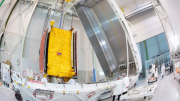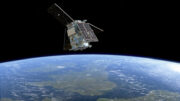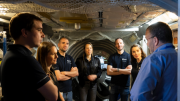The European Space Agency has signed a letter of intent with Norway to advance the prospect of a new ESA Arctic Space Centre to be hosted in Tromsø.
The Arctic is an important scientific ecosystem as well as being significant economically and geopolitically. It is also a region where climate change is particularly pronounced, with rates of warming up to four times greater than the rest of the planet. Space-based technologies and services can help monitor and mitigate climate change, while also supporting sustainable development, civil safety and security and energy management in the region.
“It is inevitable that the Arctic region faces change – as the whole planet does – but I believe that space can be a positive influence for the environment and the people of the Arctic region. There is huge potential for an ESA Arctic Space Centre to bring benefits to Norway, the wider Arctic region, and to the rest of Europe,” said Simonetta Cheli, ESA Director of Earth Observation.
Tromsø is already home to mission control for the Arctic Weather Satellite (AWS). Launched in August 2024, AWS demonstrates how a polar-orbiting constellation can improve short-term Arctic and global weather forecasts. A range of other scientific and technological organisations operate in Tromsø including the Arctic Council Secretariat, Norwegian Polar Institute, a campus of the Arctic University of Norway, the ESA Arctic PhiLab and one of four ESA Business Incubation Centres in Norway as well as several R&D institutes working in marine biotechnology, medicine, space weather and sustainability.
ESA and Norway, through the Norwegian Space Agency (NOSA), will now form a joint working group for experts to examine the possibilities for the ESA Arctic Space Centre. The Working Group will report back on a proposed scope for the centre along with the thematic priorities, governance model, and implementation timeline before the end of 2026. Subject to the development of its operational scope, the ESA Arctic Space Centre may be expected to work particularly in the areas of Earth observation, navigation and telecommunications, and to work closely with stakeholders across the Arctic region.
Norway has been a Member State of ESA since 1987 participating in a wide range of ESA programmes, and although not a member state of the European Union, takes part in Copernicus and Galileo through an addition to the Agreement on the European Economic Area.
Source: ESA









Be the first to comment on "ESA and Norway explore possibility of Arctic Space Centre"